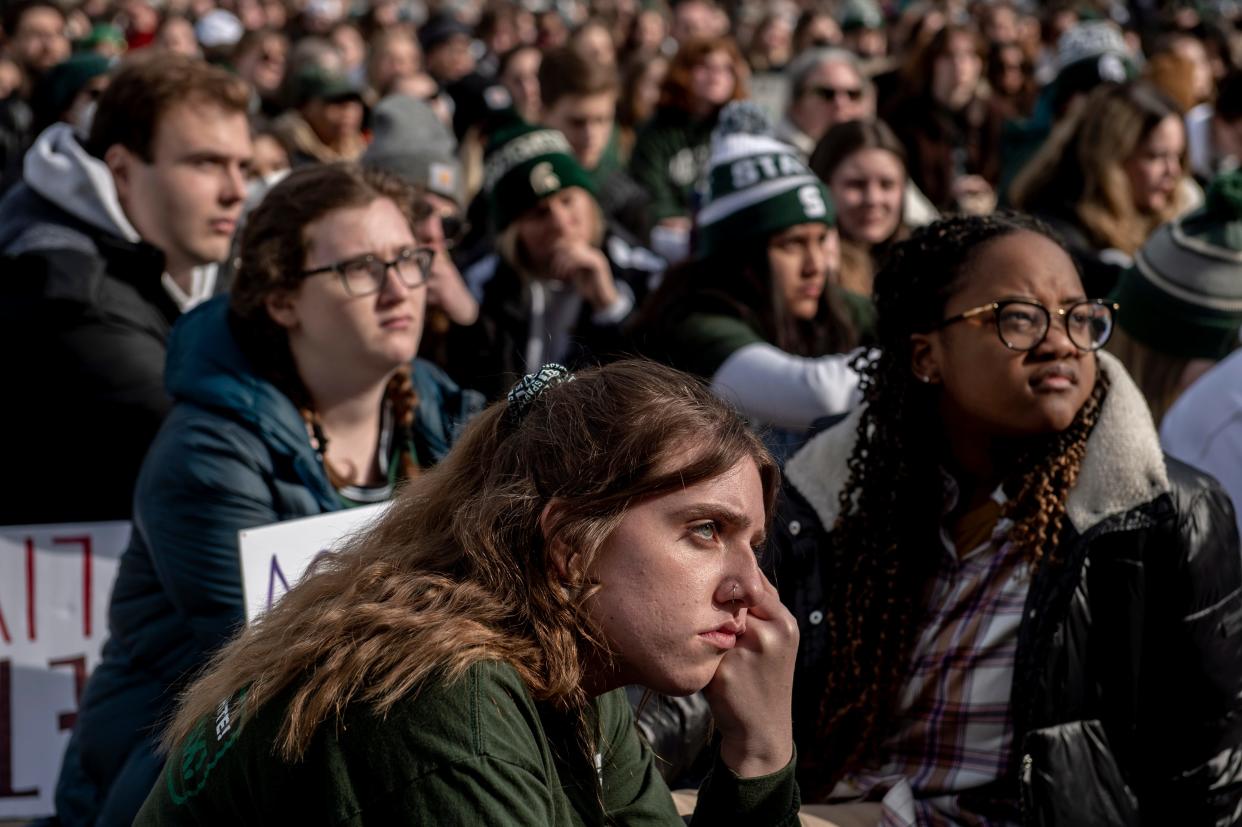Reducing mass shootings requires changing expectations of men and their private pain

Thus far, there have been more mass shootings than days in the United States in 2023, forty within a three week period, according to one report. Why this escalation in shootings? What are the different ways that shootings are occurring in our society? And what else can be done to address this problem?
The most recent — as we write this — occurred at Michigan State University. In what appears to be a first of its kind, some MSU students had also lived through prior school shootings.
Little is yet known about the MSU shooter’s motives, but early indications suggest that he had a list of businesses — including former employers — that he may have felt slighted him. Reports suggest he had been encouraged to leave, or was possibly fired, by at least one of the former employers on that list. At 43 years of age and with a checkered work history, he seems to have had little to look forward to. Instead of being arrested, he killed himself.
Less than three weeks earlier, a shooting at a dance studio in Monterey Park, California, resulted in eleven deaths and nine injuries. The 72-year-old shooter appears to have had a grievance against the studio and/or some of the people. He was divorced but had met his wife at the dance studio. He, too, seems to have had little to look forward to and killed himself prior to being arrested.
That same weekend, a 66-year-old worker at a mushroom farm in Half Moon Bay, California, killed seven coworkers, driving from one location to another to do so. He was explicit about his motives, describing a history of bullying and maltreatment. The “last straw” appears to have been a bill he received from his employer for property they believe he had damaged at work. (He said it was a coworker’s fault.)
Based on confirmed publicly available information about these men and their motives, we wonder if these men thought they were failing to live up to basic standards of what it means to be a man – being a financial provider, being able to protect one’s self and one’s kin, and finding a long term partner. These expectations are longstanding, exist in many places around the world, and continue to be relevant today. Failing to meet these expectations has been linked with gun violence.
The connection between these mass shootings and failing to meet the basic requirements of masculinity – providing, protecting, and partnering — seems straightforward enough. Some of those elements are also common in stories of “family mass murders,” which typically include a man killing his partner and their children (and possibly other relatives) after the partner has left or threatened to leave. And some of those elements are also evident in “masculine honor killings,” in which a man kills to protect his reputation.
We do not think these aspects of masculinity are inherently bad or problematic; it is not a bad thing for a man to want a partner, and to provide for and protect his family. What is problematic is the masculine beliefs that men who are failing must keep their pain to themselves, and that revealing and sharing one’s pain forfeits their “man card,” representing the same level of failure as not providing, protecting, or partnering. If we want to prevent future mass murders, one part of the solution is changing masculine expectations to permit men to express their pain without being mocked or belittled for feeling this way.
We fear that the ever escalating and diversifying mass shootings along with the inability/unwillingness of legislators to take effective action may make large numbers of people feel like they have no control over what happens, and simply give up and accept their fate, a phenomenon known as “learned helplessness.”
We cannot let that happen. We must redouble our efforts to demand that our elected public officials enact effective gun safety legislation. We must teach our boys about the social pressure to be masculine and help them learn how to resist this pressure when it is harmful to themselves or others.
Ronald Levant is professor of psychology emeritus at the University of Akron. His latest book (with Shana Pryor) is The Tough Standard: The Hard Truths About Masculinity and Violence (Oxford University Press, 2020.)
Christopher Kilmartin is professor of psychology emeritus at the University of Mary Washington. His latest book is The Fictions that Shape Men's Lives (Routledge, 2021).
Andrew Smiler is a therapist and author who works with teen boys and adult men. His most recent book is “Is Masculinity Toxic: A Primer for the 21st Century”
This article originally appeared on Akron Beacon Journal: Reducing mass shootings requires changing expectations of men

